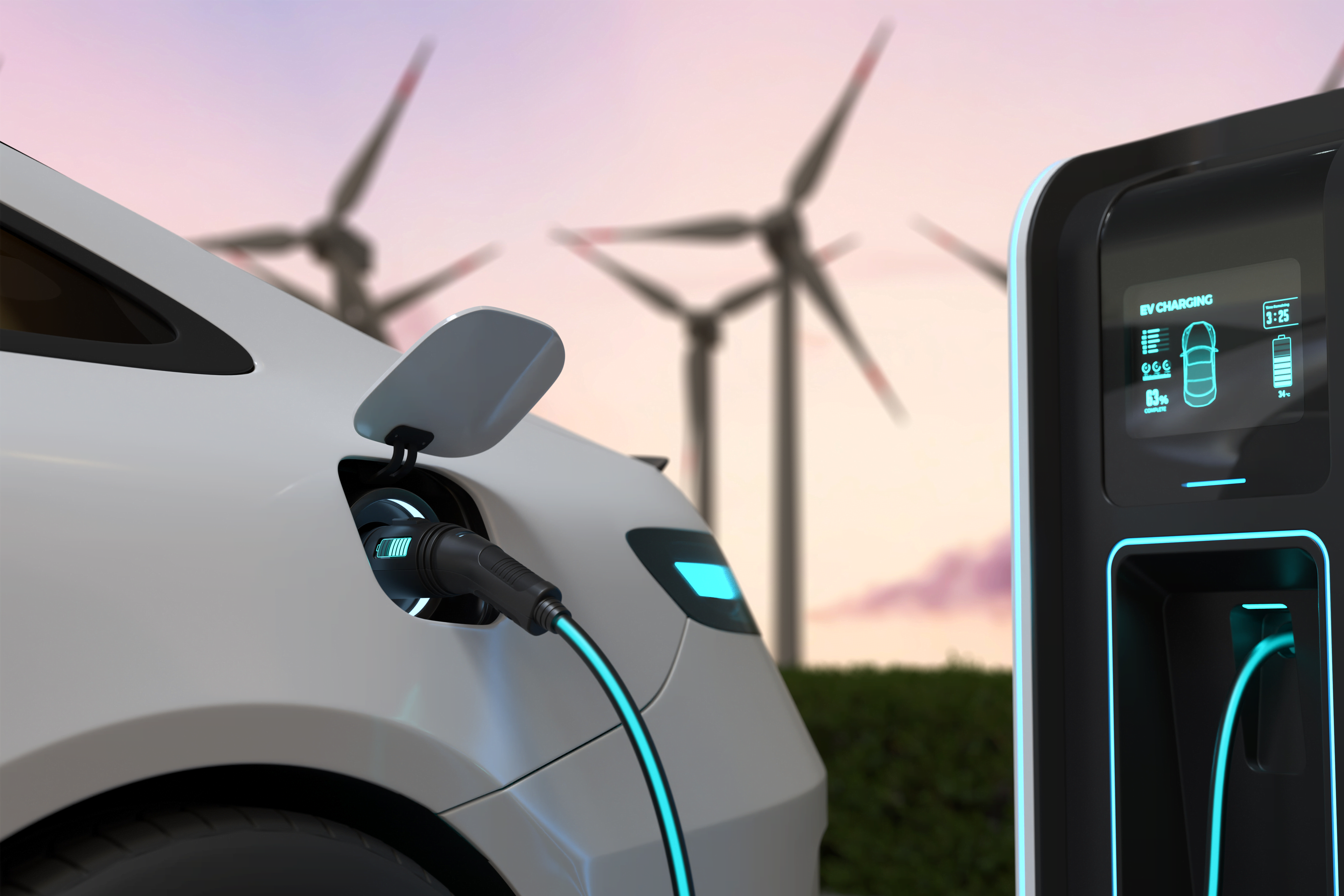EY refers to the global organization, and may refer to one or more, of the member firms of Ernst & Young Global Limited, each of which is a separate legal entity. Ernst & Young Global Limited, a UK company limited by guarantee, does not provide services to clients.

Canada must double down on the programs that encourage consumers to buy electric vehicles to achieve its zero-emissions goal by 2035.
Contributors: Jason Clifton | Partner, eMobility, Reef Hamadah | Senior Consultant, eMobility
In brief:
- New research shows although electric vehicle (EV) adoption is on the rise in Canada, key concerns continue to hold consumers back from making the shift.
- To buoy consumer confidence and support Canada’s long-term environmental goals, stakeholders should work together to improve charging infrastructure, user experience and vehicle supply chain challenges.
Canadian EV adoption is increasing year over year. Still, the question remains: is this shift happening quickly enough to meet national, 100% light-duty sales and environmental goals? Concerns around EV charging infrastructure, user experience and the vehicle supply chain could very well impede progress in achieving environmental goals. Canada has a unique opportunity to channel shifting consumer sentiment into meaningful traction on the national energy transition. The key? Refuse to let this moment pass us by.
In Canada, EV consumer confidence is gaining real momentum and EV adoption is maturing. By the numbers, the EY Mobility Consumer Index 2023 shows 52% of Canadians intend to purchase a fully electric, plug-in hybrid or hybrid vehicle in the next few years. Additionally, 75% of respondents would pay up to a 30% premium for their EV, indicating a large shift in consumer sentiment. That’s a 6% spike in buying intent compared to 2022.
What’s driving that surge in interest and adoption? High fuel prices are the top motivator for potential EV buyers in Canada, but that’s only one piece of the puzzle. Environmental concerns are driving 36% of Canadian consumers to consider buying an EV.
As adoption increases, customer experience concerns are emerging in Canada and around the world. This gives rise to barriers that continue to hold Canadian consumers back from going all in on EVs. What stands out?
Access to vehicle and charging information feels cumbersome, fragmented and hard to understand, with consumers exhausting themselves trying to effectively research EVs.
The market is plagued by a lack of clarity on upfront costs, rebates and reliability while concerns about resale and poor experiences with charging networks persist.
Digging deeper into these findings reveals a slew of connected themes, including whether more fulsome collaboration between government, utilities, original equipment manufacturers (OEMs) and private entities could improve the experience of buying, owning and driving an EV.
The data certainly points in that direction. Although installing more charging infrastructure is important to encouraging meaningful and lasting EV uptake in Canada, the ecosystem must function synchronously between OEMs, utilities and charge point operators to continue to driving consumer confidence around the switch to EVs.
For example, together these groups can:
- Improve the national supply chain to secure EV orders. EY survey showed that in Canada shared mobility continues to grapple with a host of issues, including the inability to replenish vehicle stocks amid protracted supply chain challenges, labour shortages and inflationary pressures — all of which are driving a rise in fares and unavailability of rides/drivers.
- Work together on utility programs like time of use rebates. This could assuage the almost one quarter of Canadian survey respondents who are concerned about the cost of owning an EV.
- Generate convenient, safe and accessible charging solutions. Our survey shows the high costs of charger installation and safe installation are the main concern of 60% of Canadian EV owners. Additionally, over half of respondents highlighted locating a charger and ensuring shorter wait times among the most important factors consumers considered.
- Foster collaboration between charge point operators and regulators to improve customer experience. This could take shape through a number of potential channels, such as offering roaming networks, increasing network uptime and providing contactless payment options.
We’ve already seen some initiative taken in this direction. For example, the collective effort by automotive OEMs to supply a nationwide charging network¹, and work by the Canadian government to improve the manufacturing footprint. Still, our research shows that these standalone efforts will not be enough in and of themselves.
To truly tackle issues around customer experience in the hopes of fueling sustainable EV adoption, Canada should:
1. Explore collaborative efforts to improve customer charging experiences. Charging network user experience can be improved. Over half of EY survey respondents (59%) said they have trouble finding a charging station, and 45% experience long wait times. Meanwhile, three quarters of respondents have experienced broken chargers, an inability to access the port or interoperability issues.
Charge point operators and regulators can work together to enforce charger uptime and maintenance standards and make the infrastructure more resilient. In the UK, recent regulation now makes it mandatory for chargers to have a 99% reliability rate and offer the option of contactless payments. What’s more, with 41% of users citing expensive charging costs as a concern, increased payment processing options and roaming capabilities that allow for cheaper inter-network charging could also be beneficial.
2. Simplify EV education to deepen awareness. With so many connection points between governments and citizens, a cohesive ecosystem can drive EV uptake by building purposeful communications that streamline Canadian consumers’ purchase journey. Utilities, OEMs, charge point operators and automotive bloggers all have points of view regarding EVs, charging technologies and charging costs. While digital media are the most popular, widespread information sources can be exhausting for consumers trying to research their options.
Embracing digital channels can help streamline that process, helping consumers more easily understand what’s out there and make decisions. Globally, OEMs are adopting digital showrooms with augmented and virtual reality integration to enhance the pre-purchase process. More than half (52%) of EY survey respondents say that approach would simplify their decision-making processes. Investing in dealership salesperson training can also yield a more informative experience for EV buyers.
3. Rethink energy planning and rebates. In Canada, 59% of respondents worry about high charger installation costs, and 44% are concerned with the high upfront cost of battery electric vehicles (BEVs). That said, some of these would-be buyers may be eligible for charger rebates through their utility providers — for example, BC’s Electric Car Rebates, EV Charger Rebates | BC Hydro, and Fortis BC's $5,000 grant for charger installation. Although utilities provide these programs, by the time consumers get to reading about them, many have research fatigue.
By flipping the paradigm and taking a bottom-up approach to energy planning, utilities can enable a faster response, since they have the operational insight to manage and cater to their local market needs.
Improve battery lifecycle and maintenance knowledge. Consumers worry about the cost of replacing and maintaining batteries. In fact, one quarter of respondents (24%) cited expensive battery replacement as a deterrent to buying an EV. Information regarding the battery lifecycle is still nascent. Still, as more EV miles are driven globally, OEMs and educational entities can shed light on the health of batteries over the vehicle’s lifetime. They can also help educate consumers about maintenance leading practices and safety considerations, as well as the appropriate steps to take when a battery reaches the end of its useful life.
Industry stakeholders can help consumers plan for all of this, including battery recycling and repurposing, by communicating better with consumers. Newer technologies can also bring greater transparency into battery life parameters, empowering EV owners and increasing battery resale value.
Summary
Although Canada has been working hard to drive change, we must double down on the types of programs that will help consumers confidently invest in EVs as we continue to progress towards Canada’s goal for 100% of car and passenger truck sales being zero emission by 2035.
Related articles
The great cross-sector convergence in the battery mineral value chain
Mining, manufacturing, and power and utilities sectors must collaborate now to accelerate electrification across Canada.
Top tips for Canadian manufacturers on clean technology tax credits and government incentives
Considerations for the manufacturing and mobility sector on how to take advantage of new clean technology tax credits.
The evolving landscape of eMobility: Understanding the current state and future aspirations
Evolving landscape of eMobility: Understanding the current state and future aspirations of micromobility in Canada.






